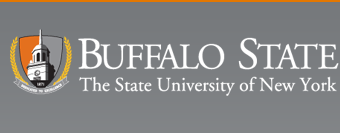
Event Title
Faculty and Student Conceptions of Academic Rigor
Start Date
31-10-2013 11:00 AM
Description
Our institution has used the National Survey of Student Engagement (NSSE) to measure the level of academic challenge (Kuh, 2009). Faced with lackluster results, the college made increasing academic rigor the cornerstone of our five year strategic plan. A cross-disciplinary research group responded with an ongoing SoTL study. Based on findings from faculty focus groups, a campus wide survey of faculty, and an extensive literature review, we developed a multidimensional model of academic rigor based on faculty perceptions (Draeger, del Prado Hill, Hunter, and Mahler, 2013). We concluded that learning is most rigorous when students are actively learning meaningful content with higher-order thinking at the appropriate level of expectation within a given context. More recently our inquiry expanded into student perspectives on academic rigor. Drawing on a campus-wide survey, focus groups and interviews with students, we found student conceptions of academic rigor differed from each other and from the faculty model. Students expressed concerns about workload, grading standards, level of difficulty, level of interest, perceived relevance to future goals, etc. These student themes have also been found in the literature, such as the relationship between perceived workload and quality of learning (Lizzio et al, 2002; Kember & Leung, 1998; Kember, 2004), grades and student performance (Wyatt et al, 2005), student engagement (Astin, 1984; Bain, 2012), and differing expectations among various members of the university community (Sanders et al, 2000). This poster will present faculty and student models of academic rigor and will solicit participant feedback through an interactive display.
Faculty and Student Conceptions of Academic Rigor
Our institution has used the National Survey of Student Engagement (NSSE) to measure the level of academic challenge (Kuh, 2009). Faced with lackluster results, the college made increasing academic rigor the cornerstone of our five year strategic plan. A cross-disciplinary research group responded with an ongoing SoTL study. Based on findings from faculty focus groups, a campus wide survey of faculty, and an extensive literature review, we developed a multidimensional model of academic rigor based on faculty perceptions (Draeger, del Prado Hill, Hunter, and Mahler, 2013). We concluded that learning is most rigorous when students are actively learning meaningful content with higher-order thinking at the appropriate level of expectation within a given context. More recently our inquiry expanded into student perspectives on academic rigor. Drawing on a campus-wide survey, focus groups and interviews with students, we found student conceptions of academic rigor differed from each other and from the faculty model. Students expressed concerns about workload, grading standards, level of difficulty, level of interest, perceived relevance to future goals, etc. These student themes have also been found in the literature, such as the relationship between perceived workload and quality of learning (Lizzio et al, 2002; Kember & Leung, 1998; Kember, 2004), grades and student performance (Wyatt et al, 2005), student engagement (Astin, 1984; Bain, 2012), and differing expectations among various members of the university community (Sanders et al, 2000). This poster will present faculty and student models of academic rigor and will solicit participant feedback through an interactive display.

